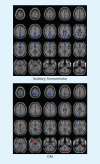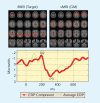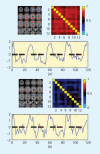Canonical Correlation Analysis for Data Fusion and Group Inferences: Examining applications of medical imaging data
- PMID: 20706554
- PMCID: PMC2919827
- DOI: 10.1109/MSP.2010.936725
Canonical Correlation Analysis for Data Fusion and Group Inferences: Examining applications of medical imaging data
Figures







References
-
- Hotelling H. Relations between two sets of variates. Biometrika. 1936;28:321–377. <AU: Kindly provide the issue number.>.
-
- Kettenring J. Canonical analysis of several sets of variables. Biometrika. 1971;58:433–451. <AU: Kindly provide the issue number.>.
-
- Friston K, Jezzard P, Turner R. Analysis of functional MRI time-series. Hum. Brain Mapp. 1994;1:153–171. <AU: Kindly provide the issue number.>.
-
- Calhoun VD, Adali T. Unmixing fMRI with independent component analysis. IEEE Eng. Med. Biol. Mag. 2006 Mar./Apr.25(2):79–90. - PubMed
Grants and funding
LinkOut - more resources
Full Text Sources
Other Literature Sources
